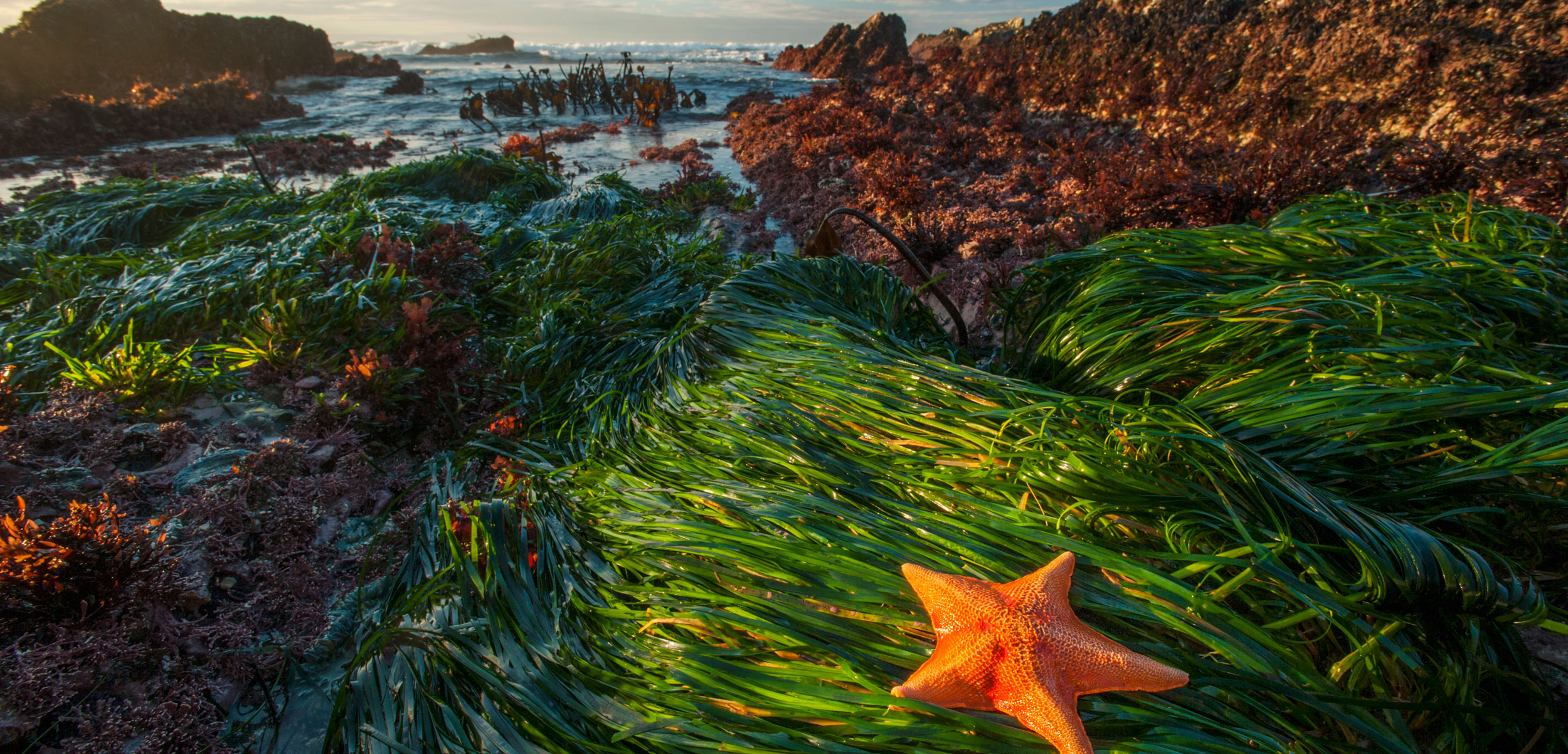Seaweed and Seagrass Buffer the Acidity of the Nearby Ocean
Oysters, mussels, and corals can especially benefit from marine vegetation’s ability to limit ocean acidification.
Article body copy
Ocean acidification is already threatening marine life around the world, and conditions are only expected to worsen in the coming years. But for certain shoreline environments, there may be a workaround. Researchers have discovered that marine vegetation such as seaweed and seagrass exert such a strong mitigating effect on local water acidification that they could alleviate some of the impacts on coastal ecosystems.
“What we found is that across a broad range of communities—from those that have sea anemones to those with tons of algae and shellfish—we still see the same pattern,” says Cascade Sorte, an ecologist at the University of California, Irvine, and senior author of the new report. “The more primary producers there are, the more amenable the pH conditions for shellfish and other species that are sensitive to ocean acidification.”
Most predictions about ocean acidification have focused on broad-scale impacts in open water. But coastal environments play by different chemical and biological rules than the open ocean, so findings from one system will not necessarily apply to the other.
With this in mind, Sorte and her coauthor Nyssa Silbiger set out to see if coastal vegetation could buffer ocean acidification by taking up excess carbon dioxide. Until now, the idea had never been tested across broad geographic areas and diverse biological communities. Sorte and Silbiger selected 57 tide pools at four sites along an 1,800-kilometer stretch of the coast from Oregon to Southern California. They characterized the physical and biological components of each pool—counting and classifying the species present, for example, and taking various chemical measurements—and then statistically analyzed those factors’ influence on the water’s acidity.
Sorte expected geography to exert a strong influence on acidity levels, but she was surprised to find that biology was by far the most significant predictor. “That’s analogous to saying the amount of algae present is more important than whether a tide pool is found in Oregon versus California,” she says. “Biology can completely trump location.”
She and Silbiger also found that the greater the amount of vegetation present, the higher the rate of calcification for shell-forming species. This implies that seagrass and algae could help protect the ability of shell-forming creatures like sea snails, oysters, and mussels from being degraded by acidification—a problem that’s already present in some places and is predicted to become more pronounced over the next century.
Sorte says the acidification-buffering effects will likely be limited to places with more abundant vegetation and relatively little water movement, as opposed to the open ocean or coastal areas where plants and algae populations have been degraded. But the good news is there are still many areas that could benefit.
Scientists, fishers, and farmers alike will likely welcome this news. Matthew Moretti, president of Wild Ocean Aquaculture and Bangs Island Mussels in Maine, for example, already grows kelp to boost his farm’s bottom line. But Moretti says it’s “an added bonus” to learn that the kelp may also be helping his shellfish thrive.
“If seaweed can lower the acidity of ocean water within a certain area, that’s potentially very useful to us,” he says. “Any help we can get to improve the conditions of our mussels and scallops is very encouraging and welcome.”

